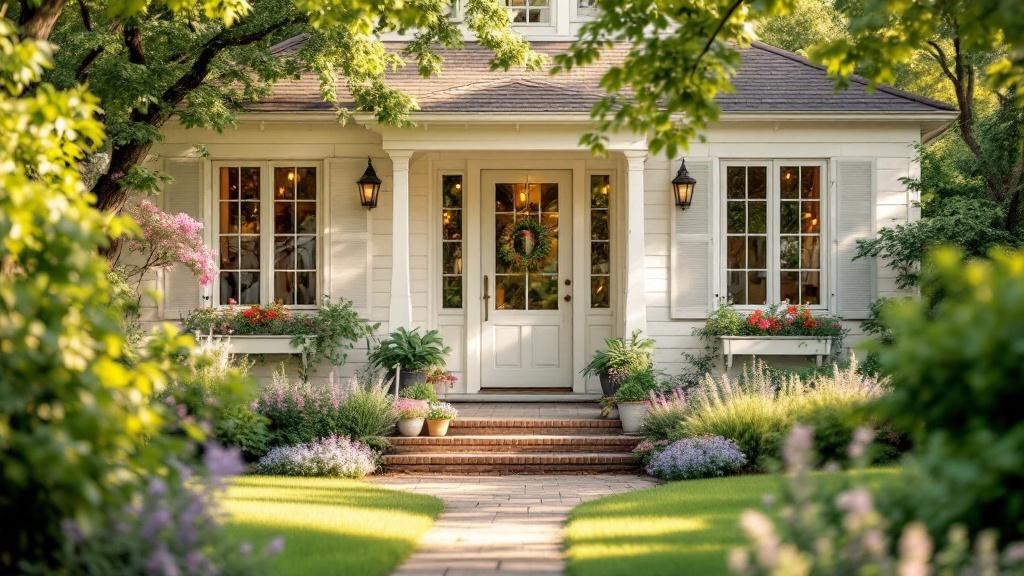What Do Old People Like To Do?
Discover the favorite activities of the elderly - from physical to creative, these engaging pursuits bring joy and fulfillment!
.jpg)
Engaging Activities for the Elderly
Engaging in activities is incredibly important for the well-being of elderly individuals. Participating in various activities can promote physical, mental, and emotional health, leading to a higher quality of life. When choosing activities for the elderly, it's essential to consider their interests, abilities, and individual preferences.
Importance of Activities for the Elderly
Engaging in activities offers numerous benefits for the elderly. It helps to keep their minds and bodies active, enhances their overall well-being, and provides a sense of purpose and enjoyment. Some key benefits of activities for the elderly include:
- Physical Health: Many activities promote physical fitness, flexibility, and strength, contributing to better overall health and mobility.
- Mental Stimulation: Activities that challenge the mind can help improve cognitive function, memory, and mental sharpness.
- Emotional Well-being: Engaging in enjoyable activities can boost mood, reduce stress, and combat feelings of loneliness or isolation.
- Social Interaction: Participating in activities provides opportunities for socialization, fostering connections and a sense of belonging within a community.
- Sense of Achievement: Accomplishing tasks or mastering new skills through activities can boost self-esteem and provide a sense of accomplishment.
Factors to Consider When Choosing Activities
When selecting activities for the elderly, it's important to consider their personal preferences, abilities, and any physical or cognitive limitations they may have. Here are some factors to keep in mind:
- Interests: Choose activities that align with the individual's hobbies, passions, or past experiences. This helps to ensure their engagement and enjoyment.
- Physical Abilities: Consider the person's physical capabilities and choose activities that are suitable for their mobility, strength, and endurance.
- Cognitive Abilities: Take into account the individual's cognitive function and select activities that match their level of mental ability.
- Safety: Ensure that the chosen activities are safe and appropriate for the person's physical and cognitive health.
- Variety: Offer a range of activities to cater to different interests and abilities, providing a diverse and stimulating experience.
- Flexibility: Allow for flexibility in activities, considering individual preferences and adapting the activities as needed.
By understanding the importance of activities for the elderly and considering the factors mentioned above, you can select engaging and suitable activities that promote their overall well-being and bring joy to their lives.
Physical Activities
Engaging in physical activities is not only beneficial for the elderly but also plays a vital role in maintaining their overall well-being. Physical activities help to improve strength, flexibility, mobility, and cardiovascular health. In this section, we will explore the benefits of physical activities for the elderly and provide examples of activities that are loved by this age group.
Benefits of Physical Activities for the Elderly
Regular physical activities offer numerous advantages for the elderly, both physically and mentally. Here are some key benefits:
- Improved Physical Health: Engaging in physical activities helps to strengthen muscles and bones, improve balance and coordination, and enhance overall physical fitness. This can reduce the risk of falls, improve cardiovascular health, and manage chronic conditions such as arthritis and osteoporosis.
- Enhanced Mental Well-being: Physical activities have a positive impact on mental health by reducing symptoms of anxiety and depression, boosting mood, and promoting better sleep. Regular exercise can also improve cognitive function and memory.
- Social Interaction: Participating in physical activities often involves social interaction, which can contribute to a sense of belonging, reduce feelings of isolation, and improve overall social well-being.
- Increased Independence: By maintaining physical health and strength, the elderly can enhance their ability to perform daily activities independently, leading to a higher quality of life and a sense of self-confidence.
Examples of Physical Activities Loved by the Elderly
There is a wide range of physical activities that the elderly can enjoy. The key is to choose activities that match their abilities, interests, and preferences. Here are some examples:
It's important for the elderly to consult with their healthcare provider before starting any new physical activity, especially if they have underlying health conditions. By incorporating physical activities into their routine, the elderly can enjoy the numerous benefits that come with staying active.
Mental Activities
Engaging in mental activities is highly beneficial for the elderly, as it helps to enhance cognitive function, memory, and overall mental well-being. These activities provide stimulation and keep the mind sharp, promoting a sense of accomplishment and fulfillment. Let's explore the benefits of mental stimulation for the elderly and some examples of mental activities that are enjoyed by them.
Benefits of Mental Stimulation for the Elderly
Mental activities play a vital role in maintaining cognitive health and preventing cognitive decline in the elderly. Here are some key benefits of engaging in mental stimulation:
- Enhanced Cognitive Function: Mental activities challenge the brain and promote cognitive abilities such as memory, attention, and problem-solving skills.
- Reduced Risk of Cognitive Decline: Regular mental stimulation has been linked to a lower risk of cognitive decline and neurodegenerative diseases, such as Alzheimer's disease and dementia.
- Improved Mood and Emotional Well-being: Engaging in mentally stimulating activities can boost mood, reduce stress, and provide a sense of purpose and accomplishment.
- Increased Social Interaction: Many mental activities involve social engagement, which helps to foster connections and combat feelings of isolation or loneliness.
Examples of Mental Activities Enjoyed by the Elderly
There is a wide range of mental activities that are enjoyed by the elderly. These activities can be tailored to individual interests and abilities. Here are some examples:
These mental activities can be tailored to suit the interests and abilities of the elderly. It's important to choose activities that provide an appropriate level of challenge and enjoyment. Encouraging the elderly to engage in these activities regularly can help promote mental well-being and overall quality of life.
Remember, mental activities should be approached with patience and support. The goal is to provide enjoyment and mental stimulation, so choose activities that resonate with the individual and create a positive and engaging experience.
Social Activities
Engaging in social activities is of utmost importance for the elderly. Social interaction provides numerous benefits, including emotional support, a sense of belonging, and mental stimulation. It helps combat feelings of loneliness and isolation, promoting overall well-being. When choosing activities for the elderly, it's essential to consider their preferences and capabilities to ensure a positive and enjoyable experience.
Importance of Social Interaction for the Elderly
Social interaction plays a vital role in the lives of the elderly. It offers a range of benefits that contribute to their overall happiness and quality of life. Some key advantages of social activities for the elderly include:
- Emotional Support: Interacting with others provides emotional support, reducing feelings of loneliness and depression.
- Sense of Belonging: Social activities foster a sense of belonging, helping the elderly feel connected to their communities and loved ones.
- Cognitive Stimulation: Engaging in conversations and activities with others stimulates the mind, enhancing cognitive functioning and memory.
- Improved Mental Health: Social interaction can boost self-esteem, reduce stress, and improve overall mental well-being.
- Physical Health Benefits: Participating in social activities often involves physical movement, which promotes physical fitness and overall health.
Examples of Social Activities Preferred by the Elderly
A variety of social activities can be enjoyed by the elderly, catering to different interests and abilities. Here are some examples of social activities that are often preferred by older individuals:
By incorporating social activities into the lives of the elderly, we can promote their overall well-being and enhance their quality of life. These activities provide opportunities for meaningful connections, personal growth, and a sense of belonging within their communities.
Creative Activities
Engaging in creative activities can bring immense joy and fulfillment to the lives of elderly individuals. Creative expression allows them to explore their imagination, tap into their emotions, and foster a sense of accomplishment. In this section, we will discuss the benefits of creative expression for the elderly and provide examples of creative activities that are embraced by this demographic.
Benefits of Creative Expression for the Elderly
Participating in creative activities offers numerous benefits for the elderly, both in terms of their mental and emotional well-being. Here are some key advantages of creative expression:
- Enhanced Cognitive Function: Creative activities stimulate the brain, improving cognitive function, memory, and problem-solving skills.
- Emotional Outlet: Engaging in creative expression provides a healthy outlet for emotions, allowing individuals to express themselves and cope with stress or difficult emotions.
- Increased Self-Confidence: Accomplishing creative tasks can boost self-esteem and provide a sense of achievement, promoting a positive self-image.
- Social Connection: Creative activities often involve group participation, fostering social interaction and a sense of belonging within a community.
- Improved Quality of Life: Creative expression brings joy and fulfillment, enhancing overall life satisfaction and mental well-being.
Examples of Creative Activities Embraced by the Elderly
There is a wide range of creative activities that can be enjoyed by the elderly. These activities allow individuals to explore their artistic side, express themselves, and engage in meaningful hobbies. Here are some examples:
Engaging in these creative activities empowers elderly individuals to explore their passions, express themselves, and find fulfillment in their hobbies. Whether it's through painting, crafting, music, writing, photography, or cooking, creative expression offers a multitude of possibilities for the elderly to nurture their artistic side and experience the many benefits it brings.
Relaxing Activities
Taking time for relaxation is essential for the overall well-being of the elderly. Engaging in relaxing activities not only promotes a sense of calm and tranquility but also helps reduce stress and improve mental and physical health. In this section, we will explore the importance of relaxation for the elderly and provide examples of activities that bring joy to them.
Importance of Relaxation for the Elderly
Relaxation plays a vital role in maintaining the health and happiness of the elderly. As individuals age, their bodies and minds may experience various changes, including increased stress levels, decreased mobility, and potential cognitive decline. Engaging in relaxation activities can help alleviate these challenges and contribute to overall well-being.
Relaxation activities provide an opportunity for the elderly to unwind, recharge, and rejuvenate. They can promote better sleep, reduce anxiety and depression, lower blood pressure, and improve cognitive function. By incorporating relaxation into their daily routine, the elderly can experience enhanced quality of life and improved overall health.
Examples of Relaxing Activities that Bring Joy to the Elderly
There are numerous relaxing activities that the elderly can enjoy. Here are some examples:
These are just a few examples of the relaxing activities that can bring joy to the elderly. It's important to consider individual preferences, abilities, and any specific health considerations when choosing activities. Encouraging and supporting the elderly in incorporating relaxation into their daily lives can greatly enhance their overall well-being and quality of life.
Sources
https://joeandbella.com/things-old-people-like-to-do

How to Address Common Challenges in Caregiving Relationships

Addressing Caregiver Burnout with Respite Care

How to Create a Comfortable and Safe Home Environment for Caregiving

How to Create a Safe Environment for In-Home Care

How Home Team Supports Caregivers with Training and Resources

